Songs Across the Water: The Cuba-U.S. Mambo, Post-Embargo
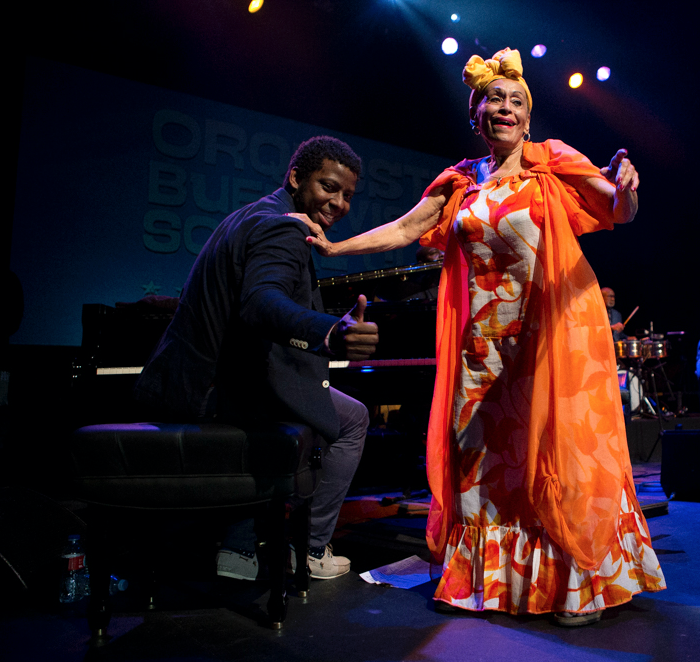
Orquesta Buena Vista Social Club’s Rolando Luna and Omara Portuondo. (photo: Carlos Pericás/Montuno.com)
Except for the Buena Vista Social Club, the crossover hit album that became a touchstone for Cuban culture and the spirit of a bygone era, most people in the U.S. have been exposed to little Cuban music since Ricky Ricardo (Desi Arnaz) and the I Love Lucy days. Except, maybe, for what Americans see of modern Cuban musicians from our Latin capital, Miami.
A sign that all that could change – very soon – happened when the United States and Cuba set steps in motion to end an embargo that had dictated policy between the two countries for 55 years. And the change won’t be more obvious than in the interaction between two longtime centers of sound: Havana and New Orleans.
NEW ORLEANS - HAVANA: SISTER CITIES
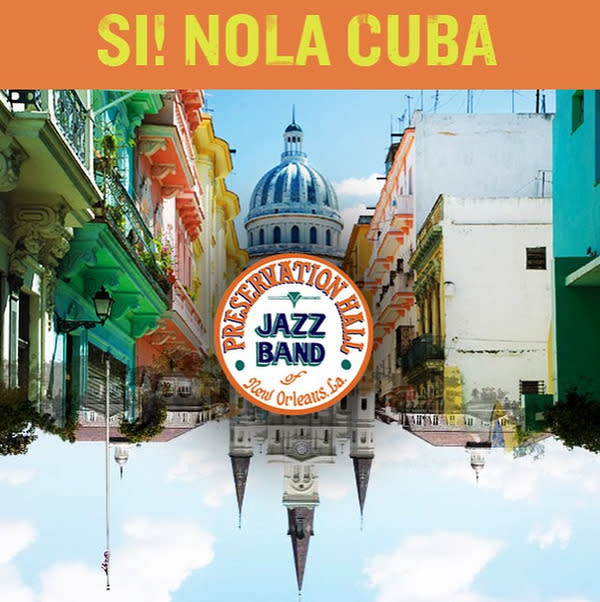
Si NOLA Cuba (photo: instagram/preshallband)
“There is something really exciting on the horizon,” says Ned Sublette, author of Cuba and Its Music: From the First Drums to the Mambo (Chicago Review Press), a deep look at the influence and development of the country’s music from a Cuban point of view. “The normalization of relations with Cuba, and the impending resumption of regular direct commercial flights between New Orleans and Havana, are going to have a seismic effect on music.
"New Orleans was Havana’s little sister, and took on the structure of a city under Spanish rule in the late 18th century,” Sublette continues. “Havana was New Orleans’ most important trading partner. The two cities influenced each other all through the years, up until the imposition of the embargo of Cuba by President Kennedy. To have this corridor open again between these two greatest of music cities is going to be enormous.”
There is probably no American more familiar with Havana and the Cuban music scene than Sublette, a New York “cowboy rumba” musician-scholar who has traveled regularly to Cuba since 1990 to immerse himself in the music culture there. Sublette is founder of Qbadisc Records, co-produced radio’s Afropop Worldwide for PRI, and has written well-reviewed books including The World That Made New Orleans (Lawrence Hill Books) and the new The American Slave Coast (Chicago Review Press).
Sublette will be traveling to Havana this month with New Orleans’s vaunted Preservation Hall Jazz Band as a liaison between the band and their Cuban counterparts and to assist a documentary film crew. Though it had been expected that direct consumer flights between the U.S. and Cuba would have begun by now, the seven Preservation Hall band members and Sublette will take one of the approved charter flights from New Orleans instead.
TAKING PRESERVATION HALL TO HAVANA
The Preservation Hall Jazz Band, with their broad explorations of Crescent City music styles, was named after the venerable venue in a 200-year-old building they call home near Jackson Square in New Orleans’s French Quarter. Preservation Hall was founded in 1961 by Allan and Sandra Jaffe, parents of current director and tuba player/bassist Ben Jaffe. Since 1963, several new-blood generations of bands have toured under the name Preservation Hall, music ambassadors traveling worldwide to “nurture and perpetuate the timeless art form of New Orleans Jazz,” from performances at Lincoln Center to a special concert for the king of Thailand.
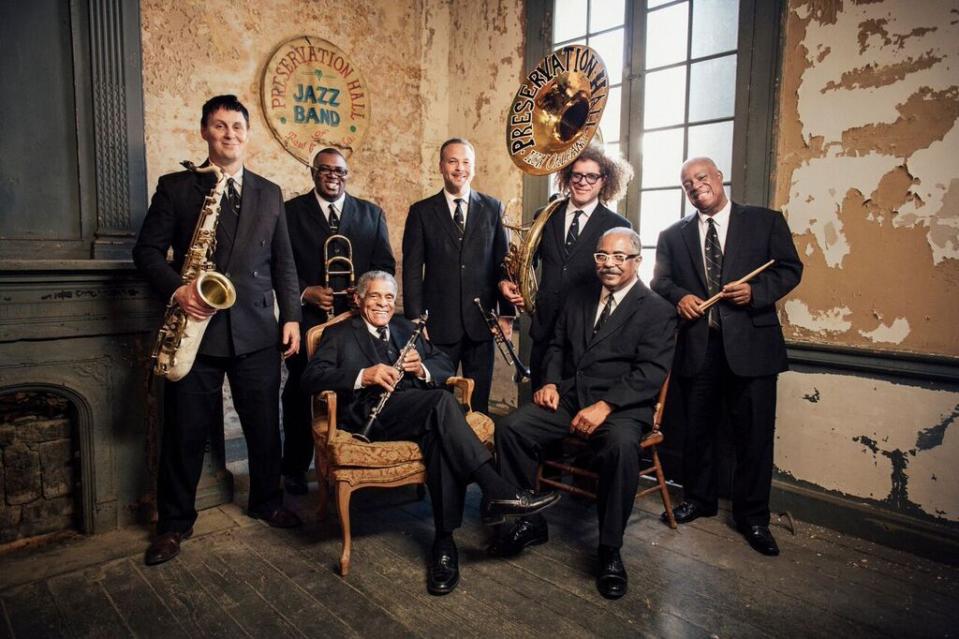
Preservation Hall Jazz Band (photo: preservationhall.com)
Jaffe has injected the touring band with fresh players and an idea to form collaborations outside the New Orleans tradition, like the PHJB’s recent successful stint sharing (literally) the stage with Del McCoury’s Bluegrass Band. The Preservation Hall band has also performed and recorded with musicians ranging from My Morning Jacket to Merle Haggard, a run culminating with the group’s 50th anniversary concert at Carnegie Hall in January 2012. “This anniversary is about the next 50 years,” Jaffe asserts. And a major event of that second half-century is about to happen: the Preservation Hall Jazz Band’s first trip to Cuba.
“I’ve wanted to visit Cuba with the Preservation Hall Band for years,” says Jaffe. “Two years ago, a friend of mine brought the Cuban pianist Ernan Lopez Nussa to Preservation Hall during a visit to New Orleans. Even though we were meeting for the first time, we both felt a deep connection, to each other. Ernan’s experience in New Orleans was profound.
"I started asking around about how to get Preservation Hall to Cuba, and that’s when I started working on a cultural exchange with the organization that arranges tours for Tulane University and CubaNola. And the Preservation Hall Foundation raised the funds through donors.
"The relationship between Havana, Cuba, and New Orleans runs deep and long,” Jaffe says. “I’ve heard New Orleans referred to as Northern Havana. We were trade partners for centuries up until the embargo and also imported and exported music and musicians. Many of the early New Orleans Jazz pioneers were of Spanish or Cuban descent.
"That musical connection between Cuba and New Orleans is palpable. You can hear Cuba in [New Orleans] music and you can hear New Orleans in Cuban music. You can feel the African rhythms and Spanish melodies.”
Besides the opportunities to play with and learn from Cuban musicians, Jaffe says that the PHJB plans to share their New Orleans musical history – “People in New Orleans still dance to jazz. We play jazz at our funerals” – with their hosts. “After visiting Cuba and speaking with musicians there, I quickly realized there is very little awareness or understanding of the role New Orleans played in the birth of jazz, really the birth of American music.
"That information was simply inaccessible in Cuba! It’s that simple. Most Cuban jazz musicians [could only learn] about jazz from one DJ that had a daily radio broadcast on Cuba’s national radio station. [But] I know as little about their history as they do about ours. There is so much to learn and understand about each other. A true collaboration is when both parties explore and learn from one another.”
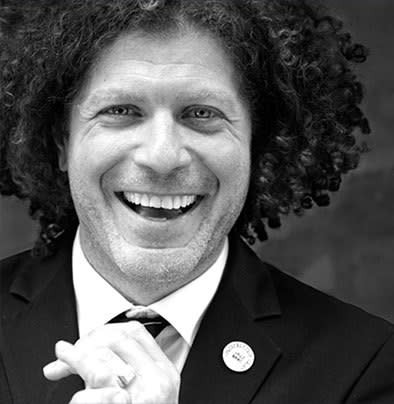
Ben Jaffe (photo: preservationhall.com)
In Cuba, besides performing at the Havana Jazz Festival, the Preservation Hall players will be looking for inspiration anywhere they can find it – concert halls, living rooms, Saturday afternoon rumbas – working with musicians from all walks of life.
“A full spectrum,” Jaffe says, “from the jazz world and beyond. We will be collaborating with Ernan Lopez Nusa as well as many other musicians who we are just now starting to meet. In addition to our appearance as part of the jazz festival at the Mella Theater, we will also be sitting in with other artists in casual jam sessions and pop-up performances around Havana. It’s amazing how we, the Preservation Hall Band, can walk into any room with any musician from any walk of life and we can find common ground. I sense there is desire for what we do.
"People just want good music. Music that shakes their soul. The musicians I met in Cuba are salt of the earth. They are connected to something special in the same way we are. I don’t know how to account for that, but it’s there. It’s something that is buried deep in our shared DNA.”
On the trip to Havana, that genetic-ally-inspired interaction will be recorded for posterity on film. “The idea to film our journey is a way to document this historic moment for us and for Cuba. This is the first time any [other] member of Preservation Hall has set foot in Cuba! The ties between the two cities go back centuries. I’ve read that ‘the embargo on Cuba was also an embargo on New Orleans.’ You never know what’s going to happen when great musicians get together and begin exploring common language. I imagine it will be magical.
"This journey is actually the beginning of the next chapter for Preservation Hall. I want to continue exploring the relationship between New Orleans and other culturally rich centers throughout the world. It’s hard to say what is going to happen [on this trip]. I do know that music has a way of bringing people together. Music unites people.”
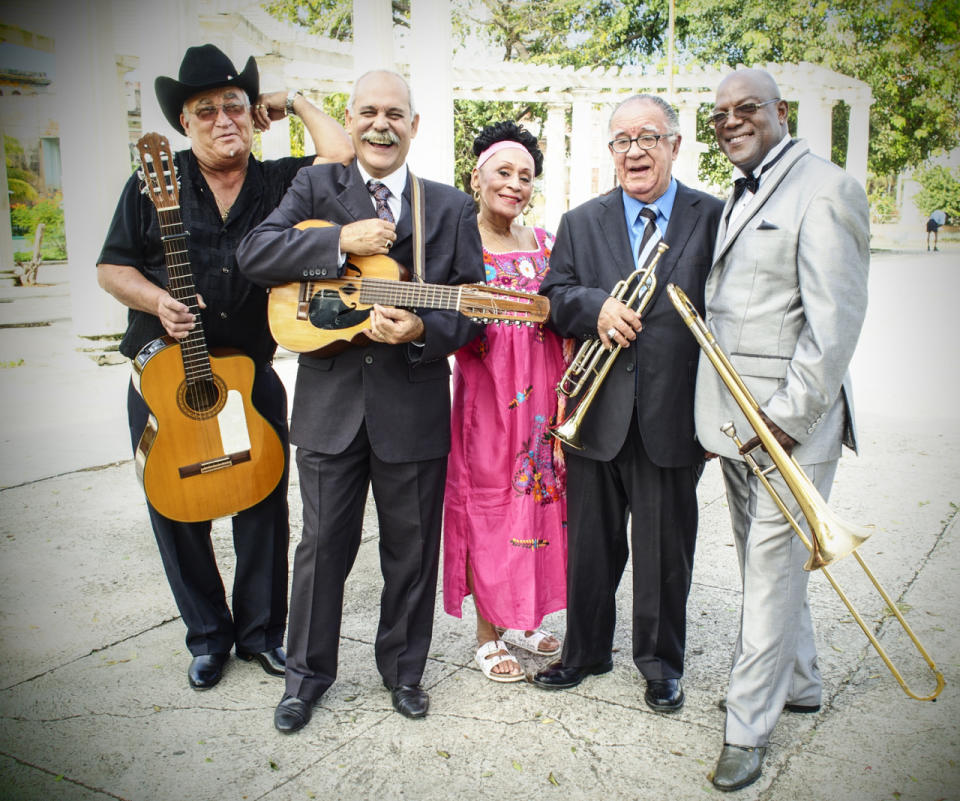
Eliades Ochoa, Barbarito Torres, Omara Portuondo, Guajiro Mirabal, Jesus “Aguaje” Ramos – Orquesta Buena Vista Social Club musicians featured on the original BVSC album. (photo: Alejandro Gonzalez)
ORQUESTA BUENA VISTA SAYS HELLO/GOODBYE
The Buena Vista Social Club is Cuba’s iconic equivalent of Preservation Hall. Buena Vista Social Club was the name of a Havana members-only club that existed through the 1940s, similar to other ethnic fraternities in Cuba and the Caribbean including New Orleans. Adopting the Buena Vista name, a Grammy-winning album recorded by Ry Cooder and Nick Gold in 1996 and Wim Wenders’s Oscar-winning documentary celebrated and re-booted the careers of several of Cuba’s long-time musical heroes – including Ibrahim Ferrer, Compay Segundo, Ruben Gonzalez, and Eilades Ochoa.
The BVSC album became the largest-selling album of Cuban music ever (a world music equivalent of Pink Floyd’s Dark Side of the Moon) and led to more than 1,000 live shows involving more than 40 musicians. Buena Vista Social Club became more than just the name of a multi-generational big band; it transformed into a brand representing a rebirth of the golden age of Cuban music from the 1930s through the 1950s.
As Ry Cooder mentioned in his liner notes for the BVSC album, Cuba’s musicians and ensembles developed in an atmosphere sealed off from the fallout of a hyper-organized and noisy world. Now, almost two decades after those Cooder-produced recording sessions, and with the passing of several of the key players involved, the remaining BVSC principals have decided it’s time to bid farewell the Buena Vista moniker while continuing to forge new paths of exposure and collaboration for Cuban music.
The 13-member Orquesta Buena Vista Social Club, which features five of the original players of the BVSC album, is currently on an international “Adios Tour” that extends through much of 2016. The goodbye celebration includes a special re-release on 180-gram vinyl double-LP of the original album by World Circuit and the label’s recent, beefy Lost and Found CD of previously unreleased live and studio tracks. Still racking up the accolades, the Orquesta played the White House in November, the first Cuban group ever to do so.
Just as previous group and solo Buena Vista tours spurred collaborations with musicians throughout the world, Buena Vista guitarist-singer Eliades Ochoa thinks that with the thaw of U.S.-Cuba relations, other Cuban musicians may be able to pick up where the Buena Vista Social Club gang leaves off.
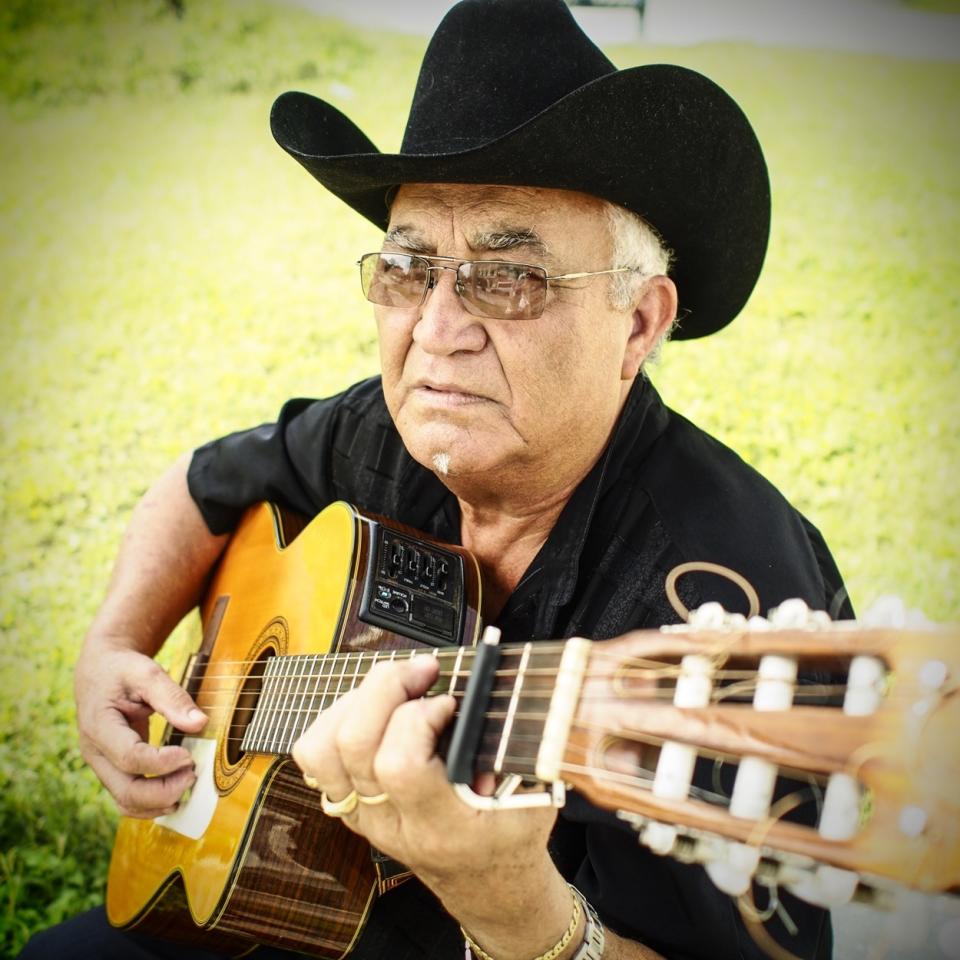
Eliades Ochoa (photo: Alejandro Gonzalez)
Eliades Ochoa, who wears a trademark black cowboy hat, was born in 1946 in farm country close to Santiago de Cuba, near the eastern area recognized as the birthplace of Cuba’s percussion-forward son music. He began playing guitar when he was six. In 1978 he was invited to lead veteran group Cuarteto Patria, in which he cemented his fame as a hero of son, the roots of today’s salsa. Ochoa’s involvement in the Buena Vista Social Club projects led to solo CDs, world tours, and the heralded 2010 album AfroCubism (Nonesuch), recorded with Cuban and Malian musicians including Toumani Diabaté.
Ochoa believes that Cuba’s indigenous music is so ingrained and essential to the isle that the warming relations with the U.S. “won’t affect that” – though Cuban styles that were popular in the ‘50s and ‘60s, “like boleros, guarachas, and sones,” could be due for renewed attention. “The original album from the Buena Vista Social Club opened the musical doors to the rest of the world,” he says. “Nowadays a lot of different groups perform the songs from that successful project.”
He looks forward to the reopening of cross-cultural gateways shut by the U.S. embargo, but doesn’t believe the new opportunities will favor any particular styles or musicians. ”[Most of all] I would say that this new situation will encourage more relations, more brotherhood between countries.
“I’d rather think that good music is more important than anything else,” Ochoa says, “no matter the nationality. If the music moves you and makes you feel something special, this is the key point. There are two types of music: the good and the bad. You just have to choose what you like. I’m just proud to be part of this and to be able to do music. Music is our life and we enjoy it very much.”
Since the mid-1990s, Cuban musicians like Ochoa have been able to work freely and tour internationally. Though the economic bar is set relatively low, successful musicians are among the best-paid citizens on the island. Ochoa welcomes a revival of Havana’s old Tropicana-Montmartre-Riviera nightclub scene – viewed by some as a gaudy takeover by outsiders, but valued for providing well-paying jobs for local musicians. “It would be a good thing, because it would give the opportunity to enjoy and listen to sounds that were important,” Ochoa says. “And it’s a good chance to enjoy music and art in all ways of expression.”
Traditionally, much of Cuba’s best and most authentic music pours out of living rooms, neighborhood parties, Saturday afternoon rumbas, harvest celebrations, etc. Added interaction with the U.S. could change that. “I would say that new generations [of musicians] have, from one side, the traditional way to create, listen, and learn. And, from the other side, they will have new ways to do this. Musically speaking, the important element is to respect our musical roots if we’re talking about traditional music. But interaction and creating are elements of constant movement and changes.”
Unlike Cuba, where citizens’ access to modern technology has long been severely limited, most people in the U.S. listen to their music on phones and computers. In contrast, much of current-day Havana is a museum of the 1950s. And no one has ever built a recording studio in Cuba. Those are good reasons why Cuban music from Miami generally spreads farther and quicker than from Havana.
If those restrictions loosen, that could register the biggest social change prompted by the thaw in our governments’ relations. “Technologies are always good and help to spread the word,” says Ochoa. “They are getting more and more sophisticated nowadays.” Still, he believes there is one way to best appreciate songs. “The audience should be always able to enjoy live music!”
Ochoa has keyed into one of music’s never-ending benefits: its ability to offer mood-lifting communal refuge.
“I am a strong believer in the power of music to elevate the human condition,” Preservation Hall’s Jaffe agrees. “You can witness it in both New Orleans and in Cuba.
"Living in Cuba is a struggle,” Jaffe continues, “a daily struggle. Things are changing, but there is a lot to change. I don’t know what the answer is, but I know that we want to be part of the healing process.”


